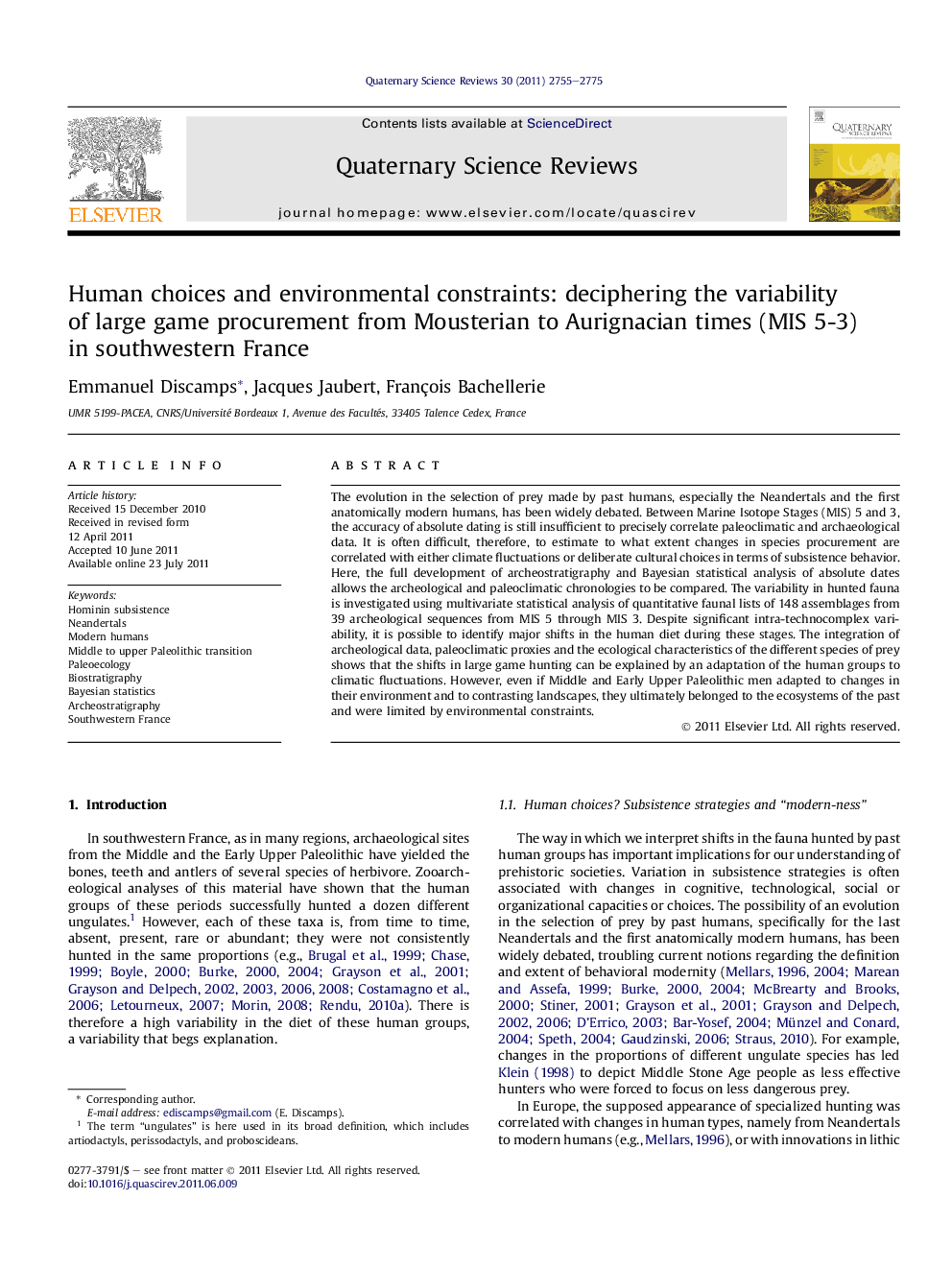| کد مقاله | کد نشریه | سال انتشار | مقاله انگلیسی | نسخه تمام متن |
|---|---|---|---|---|
| 4736728 | 1640908 | 2011 | 21 صفحه PDF | دانلود رایگان |

The evolution in the selection of prey made by past humans, especially the Neandertals and the first anatomically modern humans, has been widely debated. Between Marine Isotope Stages (MIS) 5 and 3, the accuracy of absolute dating is still insufficient to precisely correlate paleoclimatic and archaeological data. It is often difficult, therefore, to estimate to what extent changes in species procurement are correlated with either climate fluctuations or deliberate cultural choices in terms of subsistence behavior. Here, the full development of archeostratigraphy and Bayesian statistical analysis of absolute dates allows the archeological and paleoclimatic chronologies to be compared. The variability in hunted fauna is investigated using multivariate statistical analysis of quantitative faunal lists of 148 assemblages from 39 archeological sequences from MIS 5 through MIS 3. Despite significant intra-technocomplex variability, it is possible to identify major shifts in the human diet during these stages. The integration of archeological data, paleoclimatic proxies and the ecological characteristics of the different species of prey shows that the shifts in large game hunting can be explained by an adaptation of the human groups to climatic fluctuations. However, even if Middle and Early Upper Paleolithic men adapted to changes in their environment and to contrasting landscapes, they ultimately belonged to the ecosystems of the past and were limited by environmental constraints.
► Changes in hominin diet: different prey selection or adaptation to climate changes?
► Comparing archaeological and paleoclimatic data with no precisely dated records.
► Reconstruction of continental faunal dynamics of Southwestern France from MIS 5 to 3.
► Changes from Middle to Early Upper Paleolithic = adaptation to climate fluctuations.
► Environmental constraints limit potential human hunting strategies.
Journal: Quaternary Science Reviews - Volume 30, Issues 19–20, September 2011, Pages 2755–2775